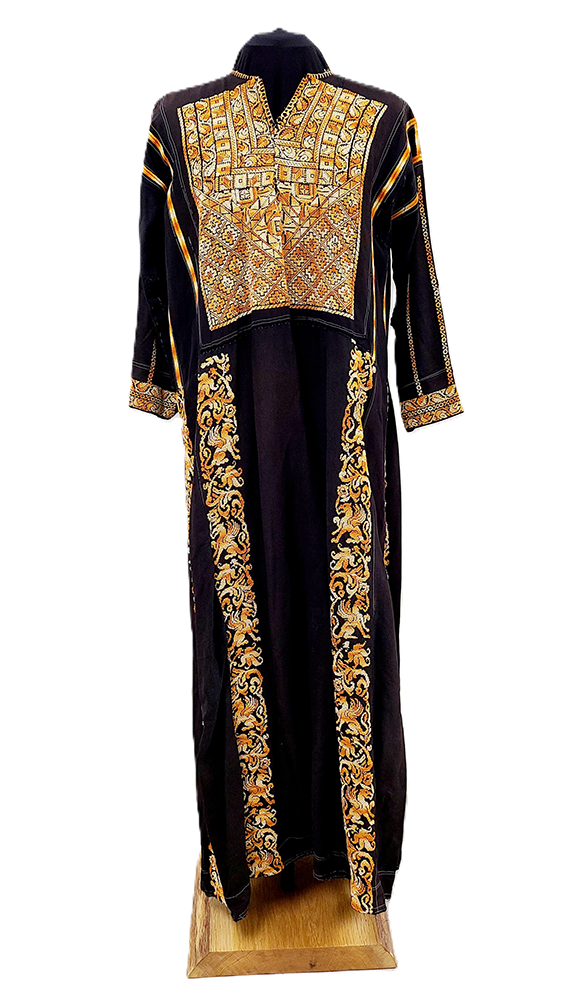Saudi Arabian Dress

In keeping with Muslim standards of modesty, this Saudi Arabian dress has long sleeves and reaches to the floor. The dress was donated to the Lam Museum by an American collector who lived in Saudi Arabia for more than a decade in the 1960s and 1970s. When she traveled around the country, she would purchase vintage clothing at the local markets. The dresses in her collection are not considered luxurious pieces. They do not represent the metropolitan culture of the Saudi capital, Riyadh, but instead the rustic lifestyles of small villages and nomadic Bedouin communities.
The most striking feature of this dress is its embroidery. Archaeologists can date Arab embroidery back to at least 1300 BCE, because examples were found in the tomb of Pharaoh Tutankhamun. It remains an important part of the culture of the Arab world today. Embroidery motifs can have many meanings. They can ward off evil, indicate social status, or depict the local environment. They may contain arabesque or calligraphy designs. The patterns and colors may even reveal the village or area that the wearer comes from.

The embroidered design of this Saudi Arabian dress hides images of griffins: mythical creatures with the bodies of lions and the heads of eagles. These creatures have been depicted in art throughout West Asia since 3000 BCE, and they may have originated even earlier in Central Asia. In the ancient world, they were believed to live in wild areas and attack travelers. Since the Medieval period, griffins have been used as a symbol of power.
Another object from Saudi Arabia that has been featured for Artifact of the Month is a Bedouin necklace.
